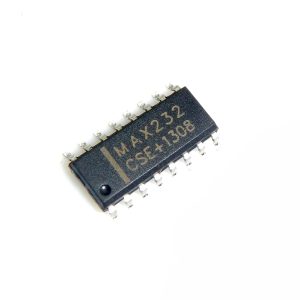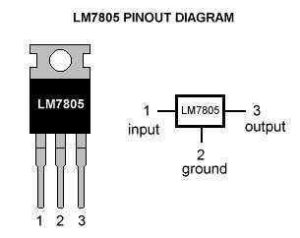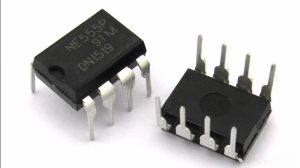Integrated circuits (ICs) are the backbone of modern industrial applications, providing essential functionalities that drive efficiency, reliability, and performance. Among the myriad of ICs available, ten stand out due to their widespread adoption and critical roles in various industrial processes. Understanding the key features of these top 10 ICs can provide valuable insights into their importance and applications.
Operational Amplifiers (Op-Amps)
Firstly, the operational amplifier (op-amp) IC, such as the LM741, is renowned for its versatility. It is used in signal conditioning, filtering, and mathematical operations. The LM741 offers high input impedance and low output impedance, making it ideal for buffering and amplifying weak signals without significant distortion. Its stability and ease of use further enhance its popularity in industrial control systems.
- Key Features:
- High input impedance
- Low output impedance
- Stability and ease of use
- Versatility in signal conditioning and filtering
555 Timer IC
Next, the 555 timer IC is a staple in timing and pulse generation applications. This IC can operate in astable, monostable, and bistable modes, providing flexibility in generating precise time delays and oscillations. Its robustness and simplicity make it a go-to choice for creating clocks, timers, and pulse-width modulation (PWM) signals in industrial equipment.
- Key Features:
- Multiple operating modes (astable, monostable, bistable)
- Precision in time delays and oscillations
- Robustness and simplicity
- Versatility in timing applications
LM317 Voltage Regulator
The third IC, the LM317 voltage regulator, is crucial for maintaining stable voltage levels in power supplies. It offers adjustable output voltage, thermal overload protection, and short-circuit protection. These features ensure reliable operation in harsh industrial environments where voltage fluctuations can lead to equipment failure.
- Key Features:
- Adjustable output voltage
- Thermal overload protection
- Short-circuit protection
- Stability in voltage regulation
Microcontrollers (MCUs)
Microcontrollers, such as the PIC16F877A, are integral to automation and control systems. This IC combines a CPU, memory, and peripherals in a single package, enabling complex tasks like data acquisition, process control, and communication. The PIC16F877A’s programmability and wide range of I/O options make it indispensable in programmable logic controllers (PLCs) and embedded systems.
- Key Features:
- Integrated CPU, memory, and peripherals
- High programmability
- Wide range of I/O options
- Essential for automation and control
MAX232 IC

In the realm of communication, the MAX232 IC is essential for serial communication between devices. It converts signals from RS-232 serial ports to TTL-compatible signals, facilitating data exchange between computers and industrial machinery. Its dual-channel design and high data rate support ensure efficient and reliable communication in industrial networks.
- Key Features:
- Converts RS-232 to TTL-compatible signals
- Dual-channel design
- High data rate support
- Reliable serial communication
AD620 Instrumentation Amplifier
The sixth IC, the AD620 instrumentation amplifier, is designed for precise low-level signal amplification. It offers high common-mode rejection ratio (CMRR) and low offset voltage, making it ideal for sensor signal conditioning in applications like temperature measurement and strain gauge monitoring. Its ability to amplify small differential signals while rejecting noise is critical in maintaining measurement accuracy.
- Key Features:
- High common-mode rejection ratio (CMRR)
- Low offset voltage
- Precision low-level signal amplification
- Ideal for sensor signal conditioning
LM7805 Voltage Regulator

Power management is another crucial aspect of industrial applications, and the LM7805 voltage regulator IC plays a significant role here. It provides a fixed 5V output with high current capability and built-in thermal shutdown. This IC ensures a stable power supply to microcontrollers and other digital circuits, preventing malfunctions due to power instability.
- Key Features:
- Fixed 5V output
- High current capability
- Built-in thermal shutdown
- Stability in power supply
ULN2003A Darlington Transistor Array
The eighth IC, the ULN2003A Darlington transistor array, is widely used for driving high-current loads like relays, motors, and LEDs. It integrates seven Darlington pairs with high-voltage outputs, allowing it to handle substantial current with minimal input. This IC simplifies the design of driver circuits in industrial automation systems.
- Key Features:
- Integrates seven Darlington pairs
- High-voltage outputs
- High current handling capability
- Simplifies driver circuit design
ADC0804 Analog-to-Digital Converter (ADC)
Analog-to-digital converters (ADCs) like the ADC0804 are vital for converting analog signals to digital data. The ADC0804 offers 8-bit resolution and a simple interface, making it suitable for digitizing sensor outputs for microcontroller processing. Its accuracy and ease of integration are crucial for real-time monitoring and control applications.
- Key Features:
- 8-bit resolution
- Simple interface
- High accuracy
- Ease of integration
NE555 Timer IC

Finally, the NE555 timer IC, similar to the 555 timer, is another versatile component used in timing and waveform generation. Its precision and reliability make it a preferred choice for creating oscillators, pulse generators, and timers in various industrial circuits.
- Key Features:
- Precision timing
- Reliability
- Versatile in creating oscillators and pulse generators
- Essential for various industrial timing applications
Conclusion
These top 10 ICs are indispensable in industrial applications due to their unique features and capabilities. From signal amplification and timing to power management and communication, each IC plays a critical role in ensuring the efficiency and reliability of industrial systems. Understanding their key features helps in selecting the right components for specific applications, ultimately enhancing the performance and longevity of industrial equipment.
Frequently Asked Questions (FAQ)
Q1: What is the primary role of operational amplifiers (Op-Amps) in industrial applications?
- A1: Operational amplifiers (Op-Amps) are primarily used for signal conditioning, filtering, and mathematical operations. Their high input impedance and low output impedance make them ideal for buffering and amplifying weak signals without significant distortion.
Q2: How does the 555 timer IC contribute to industrial applications?
- A2: The 555 timer IC is used for generating precise time delays and oscillations. It operates in multiple modes (astable, monostable, and bistable), making it versatile for creating clocks, timers, and pulse-width modulation (PWM) signals in industrial equipment.
Q3: Why is the LM317 voltage regulator important in industrial settings?
- A3: The LM317 voltage regulator ensures stable voltage levels in power supplies, offering adjustable output voltage, thermal overload protection, and short-circuit protection. This stability is crucial in harsh industrial environments to prevent equipment failure.
Q4: What makes microcontrollers (MCUs) essential in industrial automation?
- A4: Microcontrollers (MCUs) integrate a CPU, memory, and peripherals in a single package, enabling complex tasks like data acquisition, process control, and communication. Their programmability and wide range of I/O options make them indispensable in programmable logic controllers (PLCs) and embedded systems.
Q5: How does the MAX232 IC facilitate communication in industrial systems?
- A5: The MAX232 IC converts signals from RS-232 serial ports to TTL-compatible signals, enabling data exchange between computers and industrial machinery. Its dual-channel design and high data rate support ensure efficient and reliable communication in industrial networks.
Q6: What is the function of the AD620 instrumentation amplifier in industrial applications?
- A6: The AD620 instrumentation amplifier is designed for precise low-level signal amplification. It offers high common-mode rejection ratio (CMRR) and low offset voltage, making it ideal for sensor signal conditioning in applications like temperature measurement and strain gauge monitoring.
Q7: Why is the LM7805 voltage regulator widely used in industrial applications?
- A7: The LM7805 voltage regulator provides a fixed 5V output with high current capability and built-in thermal shutdown. This ensures a stable power supply to microcontrollers and other digital circuits, preventing malfunctions due to power instability.
Q8: What role does the ULN2003A Darlington transistor array play in industrial systems?
- A8: The ULN2003A Darlington transistor array is used for driving high-current loads like relays, motors, and LEDs. It integrates seven Darlington pairs with high-voltage outputs, simplifying the design of driver circuits in industrial automation systems.
Q9: How do analog-to-digital converters (ADCs) like the ADC0804 benefit industrial applications?
- A9: ADCs like the ADC0804 convert analog signals to digital data, offering 8-bit resolution and a simple interface. They are crucial for digitizing sensor outputs for microcontroller processing, providing accuracy and ease of integration for real-time monitoring and control applications.
Q10: In what applications is the NE555 timer IC commonly used?
- A10: The NE555 timer IC is used in timing and waveform generation applications. Its precision and reliability make it a preferred choice for creating oscillators, pulse generators, and timers in various industrial circuits.
